The entire region of Tuscany is celebrating the 50th anniversary this year of the last terrible flood that hit Florence on the night between November 3 and 4, 1966 and devastated the city, from centuries-old homes and palazzi to masterpieces of artwork. Special exhibitions to commemorate the anniversary as well as conferences, processions, tours and gatherings of the people that were present 50 years ago are planned. Whether you are back in Florence as a returning “Mud Angel”, a visitor or local resident wishing to take part or learn more about the effects of the flood, we’ve collected a list of the many events and exhibits you can visit to witness the extraordinary event that devastated Florence 50 years ago. It is important to recall that Florence was not the only city flooded on that fateful day: all along the course of the river, destruction followed. On the same day, the Ombrone river also flooded and caused destruction in Grosseto and Maremma. So the day remains a fateful day in the memories of all Tuscans alike, beyond Florence.
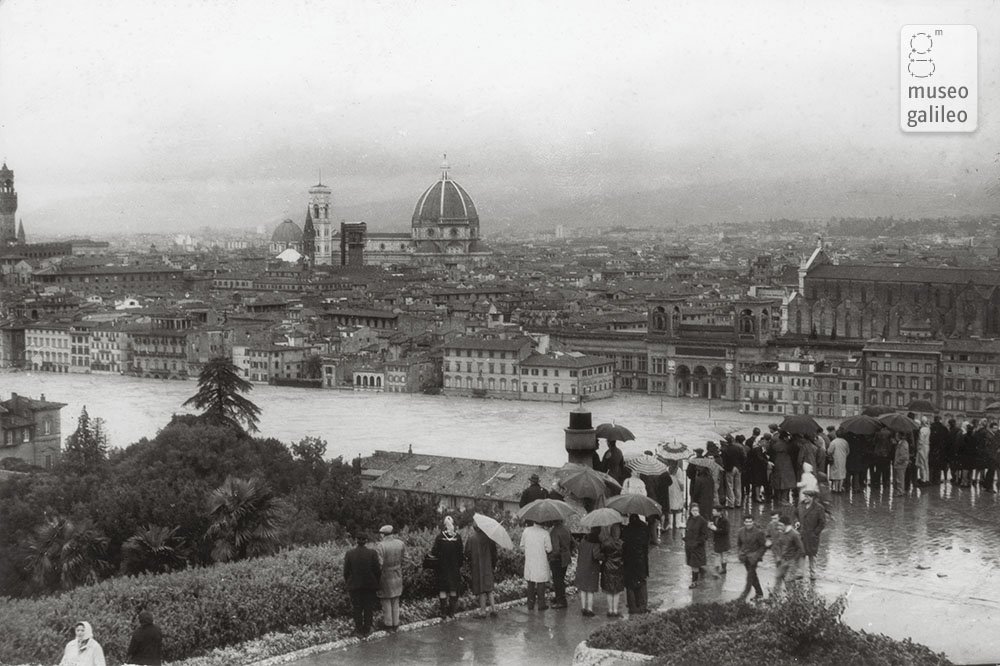
The 4th of November
The flood hit Florence on the 4th of November 1966 so the official city celebrations will take place on this day and continue until the 6th.
The official celebrations on this day include:
8.30am – celebration by the armed forces in Piazza Unità d’Italia
9am – special city council meeting with the “Mud Angels” in the Salone dei Cinquecento in Palazzo Vecchio. The city wants to render homage to the volunteers that came to Florence in the days after the flood to offer their assistance in cleaning the city, helping save millions of books and papers from the state archives and save priceless works of art from the mud and grime of the flood. They worked for days, weeks and even months to help Florence emerge from the debris and devastation the flood left behind.
Afterward, the Mud Angels are holding their own memorial meet up, which will include testimonials from Mud Angels as well as a screening of the interview to Franco Zeffirelli by RAI and the play of two pieces composed for the occasion by maestro Giuseppe Lazetta and orchestra.
The ceremony should end by 1pm. The events are open to anyone but you do need to get a badge first: between Nov 2-4, go to Piazza dell’Unita 1 where the Tuscany region will offer welcome kits to returning Mud Angels, which can also be used to visit city museums for free and be excluded from paying the tourism tax while you’re in Florence.
11.30am – Archbishop Cardinal Giuseppe Betori, a Mud Angel himself, will celebrate holy mass in Santa Croce. From there, around 1pm, a small procession will head to Ponte alle Grazie to deposit a floral crown in the Arno to commemorate the victims of the flood.
3pm – re-collocation of Vasari’s restored Last Supper in Santa Croce, where the president of Italy, Sergio Mattarella will be present.
5pm – the official memorial ceremony will take place in Palazzo Vecchio’s Salone dei Cinquecento with President of Italy Mattarella and other representatives of government. Volunteers, armed forces members and others who were present in 1966 will also be present.
6.30pm – screening of the full documentary “After the Flood” in the Salone dei Cinquecento.
8.30pm – a candlelit procession from Basilica di San Miniato al Monte down to Piazza Santa Croce, in memory of the procession that was held on November 4, 1967, a year after the flood. All are invited to participate, from Mud Angels to students. The objective of the procession, in a symbolic way, is to “pass over” the charge of caring and love for Florence from the older generation that was present in 1966 to today’s generation.
9pm – starting at 9pm, you can experience the suggestive video-mapping on Ponte Vecchio showing the bridge’s history with photos from the Archivio Fotografico Locchi. The projection will run every half hour from 7pm to 11pm every day until Nov 19.
November 5th
Presentation by the Region of Tuscany and the Council of Ministers of the plan “Arno Sicuro” (Secure Arno) which highlights the works in progress and plans to guarantee the maximum security along the entire Arno riverbanks. In Palazzo Vecchio’s Salone dei Cinquecento.
November 6th
The entire day will be dedicated to volunteers, with the region calling for the day to be called the “Day of the Volunteer”. The day starts at 9.30 with the cutting of the red ribbon at the exhibit dedicated to the flood in Palazzo Medici Riccardi on Via Cavour 2/4 (more below).
At 11.30am, a conference at Teatro Verdi (Via Ghibellina 99) will take place on “Civil Protection and Volunteers Today” where the Tuscan region, City of Florence and National Department of Civil Protection will interact with representatives from all types of volunteer organizations.
From 10 to 11am, in the Palazzo Strozzi Sacrati (Piazza Duomo 19), the president of the Tuscan region Enrico Rossi will highlight on what has been accomplished and what still needs to be done to protect citizens from the risk of flooding. This event is reserved for city majors of cities that run the risk of floods in Tuscany.
Throughout this day, you can also visit the “city of the Civil Protection” which will be set up in Piazza Santa Croce which will highlight the work the department does in matters of natural disasters across all of Italy.
At 4pm at the Odeon Cinema (Piazza Strozzi), you can also see the screening of “Why Save Florence?”, an extraordinary 1968 documentary that revealed the deplorable state of the city’s anti-flood defenses. Showing for the first time in Florence, the documentary will be presented by the director, Roger Graef, himself. The movie contains unique images, and unpublished documents and testimonies, including an interview of Indro Montanelli. In English with Italian subtitles, entry ticket 5 euro, lasts about an hour.
Mud Angels Welcomed back to the City
As mentioned above, all returning Mud Angels to Florence will receive a small token of appreciation from the city of Florence: pick up your welcome kit in Piazza dell’Unità 1 on November 2, 3 and 4 which will include a badge so that you can participate in all events in Palazzo Vecchio as well as use the ATAF bus system and visit city museums for free and be exempt from paying the city’s tourism tax while you’re in Florence. About 800 Mud Angels are expected to return to Florence during this special weekend.
Exhibits
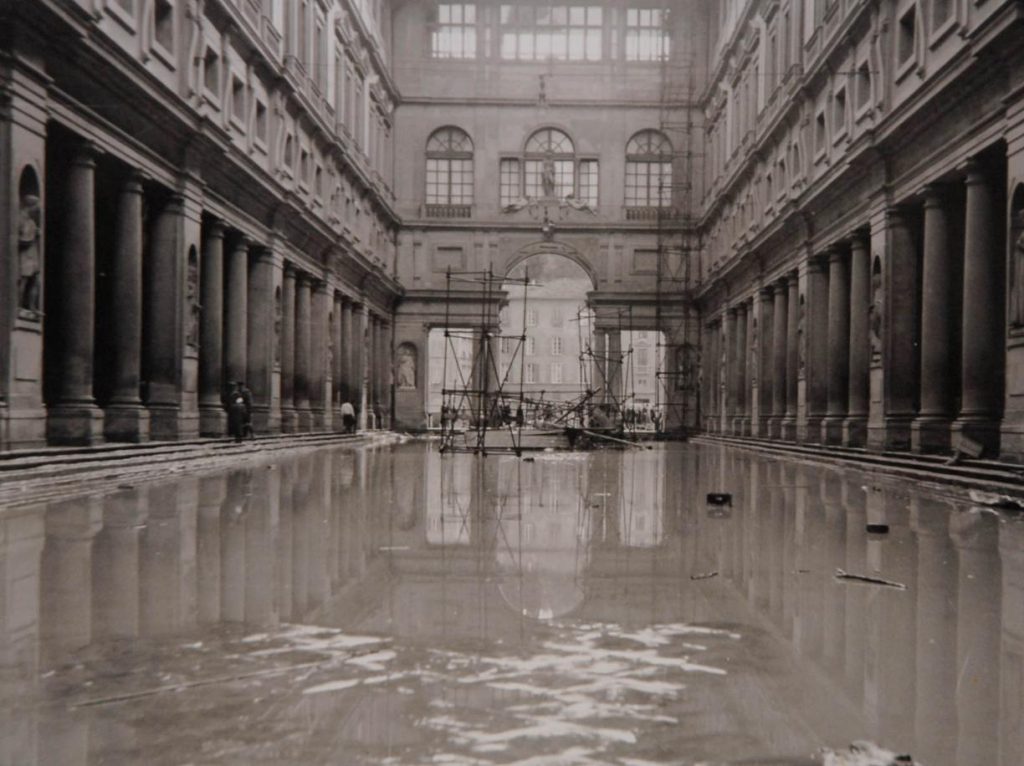
Photographs at the Uffizi
The Uffizi Gallery will also organize a small temporary exhibit which collects photographs by Uffizi staff in 1966 of the flooded Uffizi gallery, both inside and out. Just a small, extra way to remember the disaster the flood has on the museum itself.
Palazzo Medici Riccardi
At 6pm on November 3 and running until November 30th (open 10am-6pm, free), the exhibit “Arno66” opens in the Coach Gallery to commemorate the 1966 flood, with photographs and videos of the same spots in 1966 and today. A storytelling through images of what has been done and what has changed over the last 50 years to protect the region from future floods.
Within the Palazzo, another exhibit dedicated to the flood will present the works of art that were destroyed during the flood and which have now been restored. Opens October 31 and runs through March 5, 2017. Open 9am-7pm.
Beyond Borders – Novecento Museum
Also opening on Thursday November 3rd at 7pm, the exhibit at the Novecento museum will showcase all of the works (documents and paintings) donated to the city of Florence by artists of the time as a sign of solidarity after the flood, to replenish the city’s heritage of art considering what was lost. The exhibit will run until January 8, 2017 and is included in the museum ticket or separately.
The Flood in Pisa
From October 29th through January 1st, 2017, head to Palazzo Blu in Pisa to see the photographic exhibit of the effects of the Arno flood of 1966 down the river in Pisa, Pontedera, Santa Croce and Castelfranco. Free entry. Open Monday-Friday 10am-7pm and Saturday and Sunday 10am-8pm. For more details: http://www.palazzoblu.it/
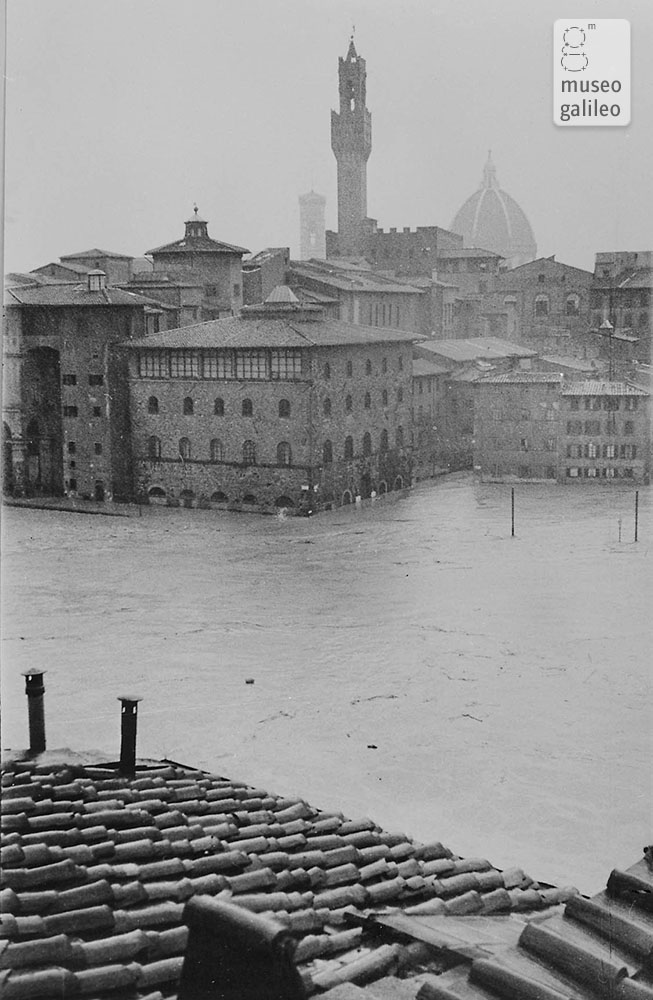
“Fishing in the Mud: The Museum and the Flood” – Galileo Museum
Open since June 20th and running until November 20th, the exhibit organized at the Galileo Museum recalls the historic event of the 1966 flood which submerged the basement and ground floors of the museum (then called the Institute and Museum of the History of Science) and caused extensive damage to the collections. Fifty years later, the exhibit documents the event, focusing on the dramatic effects the institute suffered and highlighting the salvage work and subsequent restoration of its antique scientific instruments. The success of the efforts can mostly be attributed to its then director, Maria Luisa Righini Bonelli who transformed the catastrophe into an opportunity to expand the museum’s exhibition space, modernize the criteria for the conservation and display of its valuable collections and consolidate its network of ties with important scholars and institutions around the world. The exhibition includes photographs of the museum before and after the flood, books that still show the flood damage, and others who have only recently been restored. For more details, check out: http://mostre.museogalileo.it/pescarenelfango/
“Notturno Fluviale: The bridges across the Arno from Falterona to Pisa”
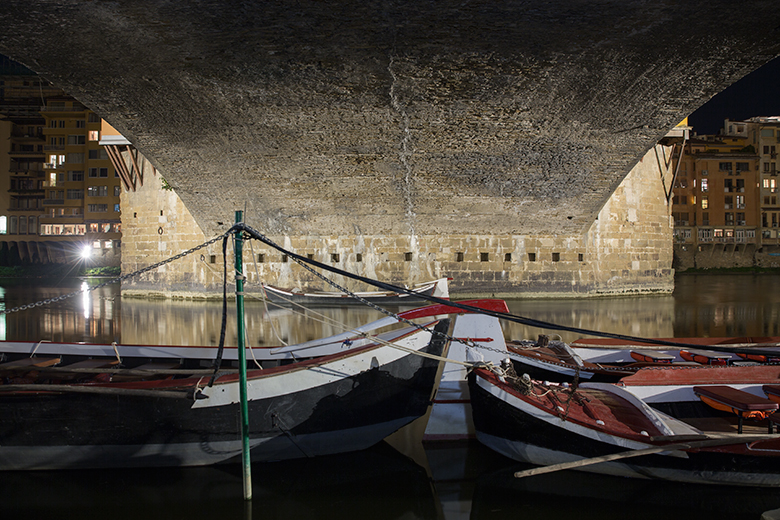
This is a contemporary photographic project by Marco Castelli to set out to photograph all of the bridges along the Arno at night, to showcase man’s attempt to live and control the river. It documents as well as portrays surreal settings, at water level and from a new perspective, under the bridges. Free entrance, November 2-7, 11am-8pm at the OnArt Gallery (via della Pergola, 57/61r, Florence).
Photographs of the Flood in Florence
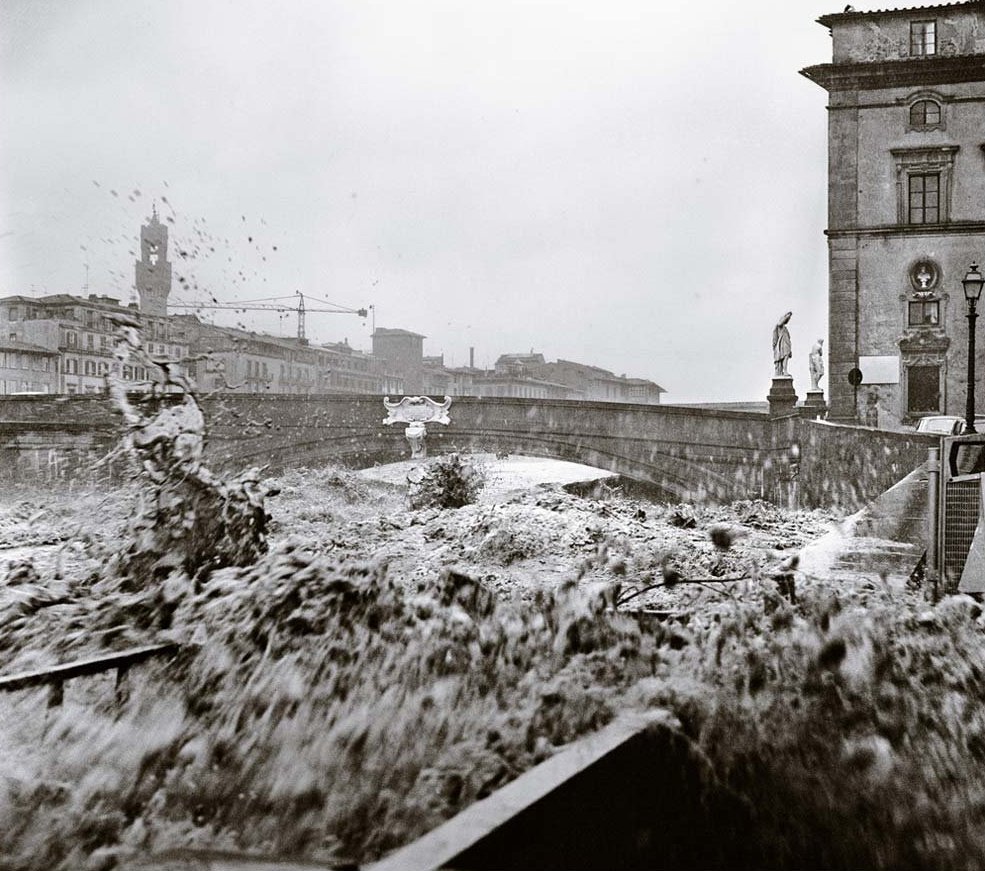
Balthazar Korab, one of the most famous and celebrated photographers from the last century, was one of the first photo-reporters in Florence after the flood. Many of the photos you may have seen of Florence after the flood published in newspapers around the world were his. Today, 16 photos from 1966 is on show at Tathys Gallery (Via dei Vellutini, 17r, Florence) from October 27 until November 26. Hours are Monday-Friday 9am-1pm and 2-7pm, Saturdays 3-7pm.
“Arno: Source of Prosperity, Source of Destruction” – State Archive in Florence
The subtitle for the exhibit is “History of the river and of the territory within the archives letters“. Open until February 4, 2017 (Monday-Friday 9am-5pm and Saturdays 9am-1pm), the exhibit focuses on the history of the river which includes documents, maps, drawings, original projects, photographs, works of art and even a boat used on the Arno on November 4th, 1966. While the focus is on the Arno and the flood of 1966, the exhibit also documents even more recent floods across Tuscany that have compromised the historical documents and patrimony of the region, highlighting the efforts to restore documents to recuperate items lost by flood waters.
National Library – “Arno 66: A Time Machine”
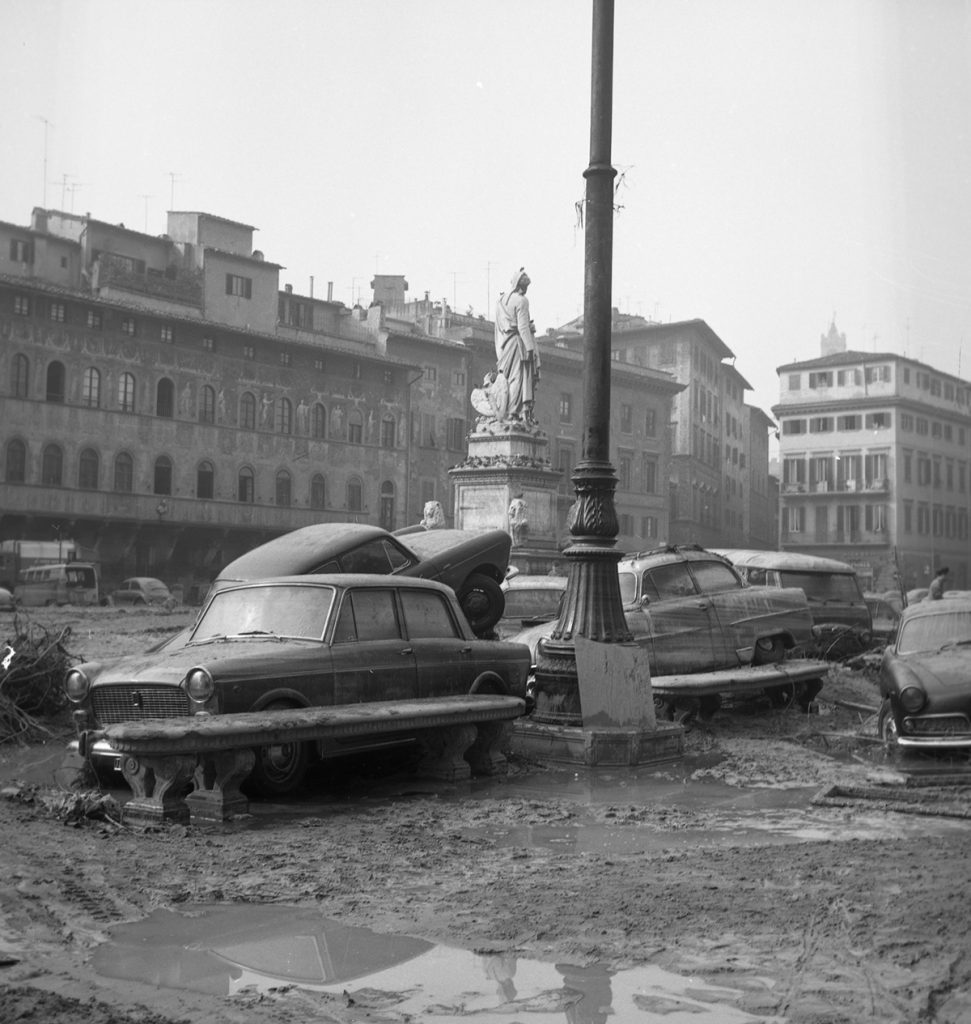
Another interesting exhibit is being offered at the Bibilioteca Nazionale, or National Library, one of the hardest hit locations of the flood. With important documents collected from past centuries and sitting right along the Arno river, many important documents and works were lost. Here is where a major help by the Mud Angels took place, with volunteers lined up and trying to save the millions of books and papers covered in mud and water. The library is hosting the photo exhibit “Arno66: the Time Machine” which is a collection of 3500 photos from the days after the flood. More interesting part is the virtual tour created that will let visitors wear a helmet and immerse themselves in the flood waters, in a manner of speaking. You can get an idea of the richness of the exhibit and tour through the official website here: http://arno66ar.it/. To actually be able to take the virtual tour, you need to book a spot. You can call 334-6606716 or send an email to bnf-fi.urp@beniculturali.it. The tour lasts about an hour and can be booked by phone between October 29 and November 25th between 10am-1pm and 2-5pm between Monday and Saturday. Tours will run at these times: November 4: 10:30am and 4pm, November 5 and 6: 10am, 12pm, 3pm and 5pm. From November 7-26 (excluding Sundays): tours will be offered Monday-Friday at 10,30am and 4pm, on Saturdays at 11:30am.
“D’Acqua e Fango: From Water and Mud” – Casa di Bargellini (Florence)
The Case della Memoria, or Houses of Memory association, have organized an exhibit at the home of Piero Bargellini, mayor of Florence during the 1966 flood, located on Via delle Pinzochere, 3, just off Piazza Santa Croce. The exhibit called “Gli Alluvionati ed il loro Sindaco” presents for the very first time letters, documents, photographs, testimonies received and written by the then Florence mayor Bargellini. The main protagonist of the exhibit are the Florentine citizens who sent letters to the mayor asking for help by describing their family’s situation after the flood. The exhibit runs until November 13.
Events, exhibits and more beyond Florence
As you travel around Tuscany this fall, you will likely also find temporary exhibits in smaller towns showcasing photographs and videos of how the flood affected Florence and beyond, given the Arno flooded the plains along its course all the way down to Pisa. For example, a photo exhibit of photos by Roberto Germogli will be taking place in San Donato in Poggio’s Palazzo Malaspina until November 27. More details here.
We will continue updating this post over the next few days as more interesting events and exhibits come to our attention!
For more details on all of the events, exhibits and conferences being held across Tuscany, you should go to the official website for the commemoration of the 1966 flood here http://toscana.firenze2016.it/